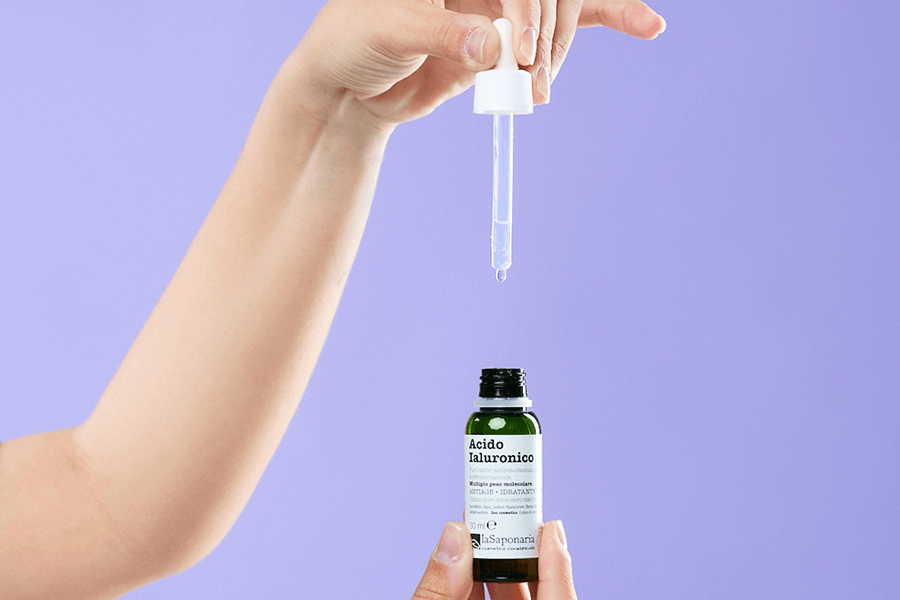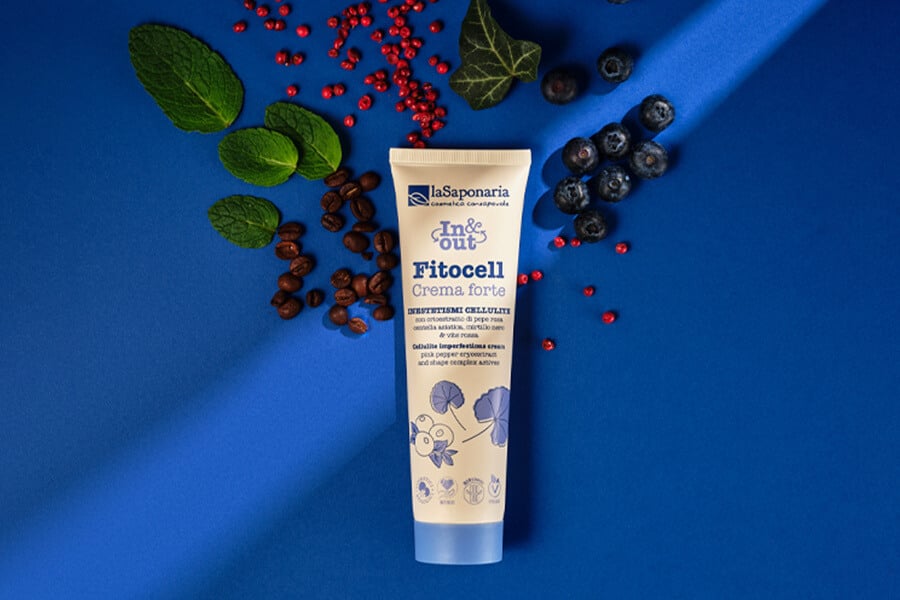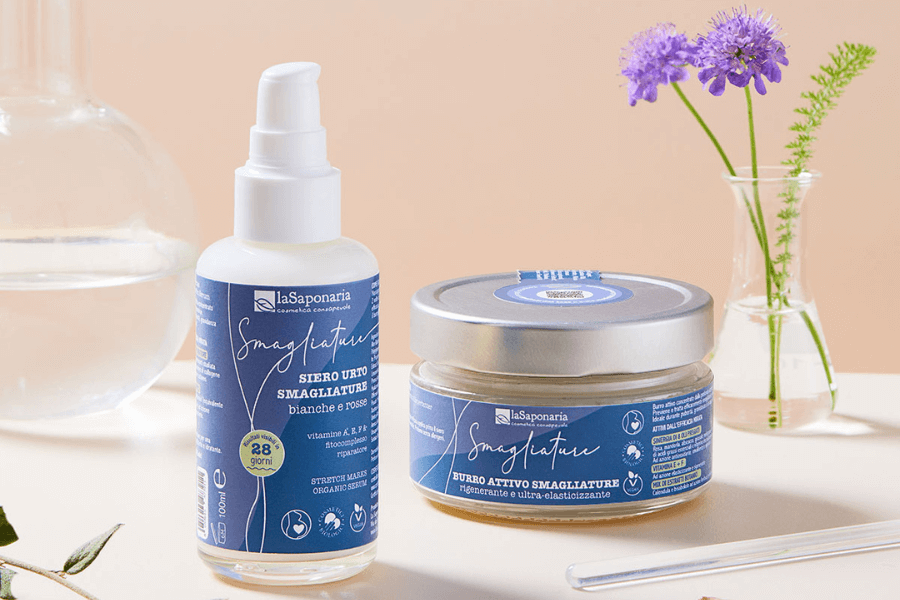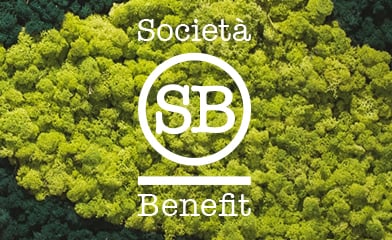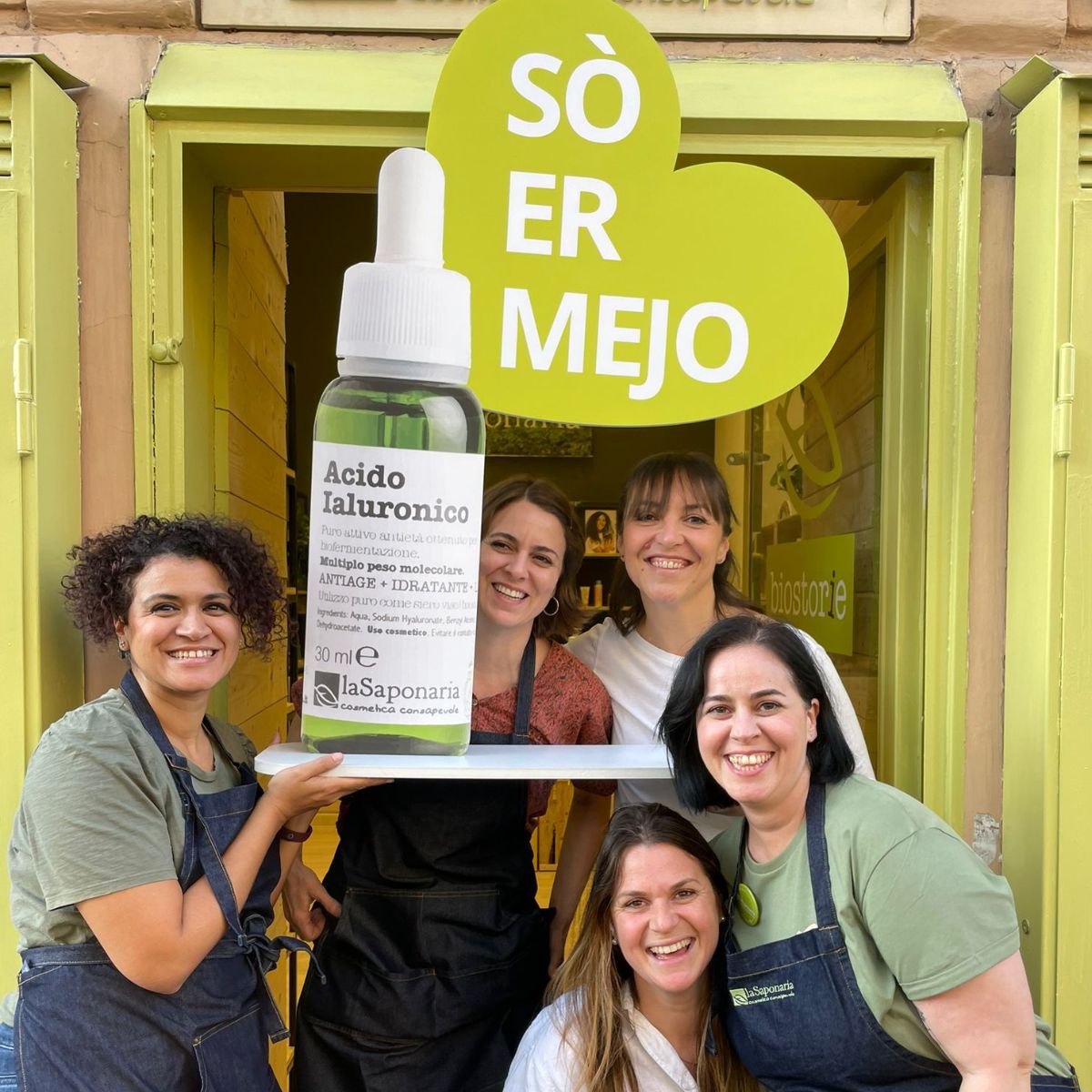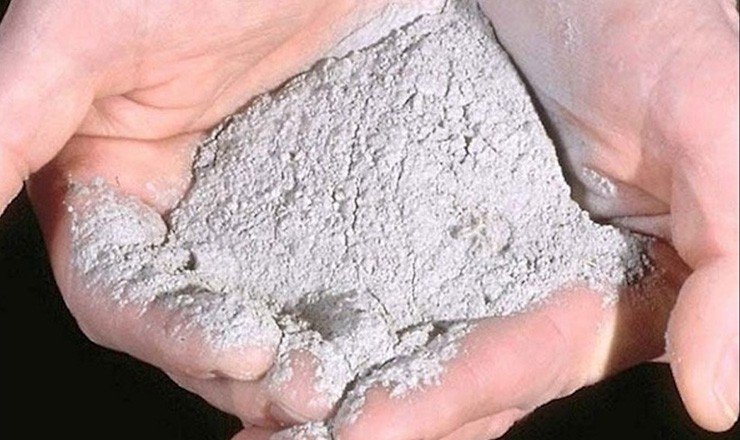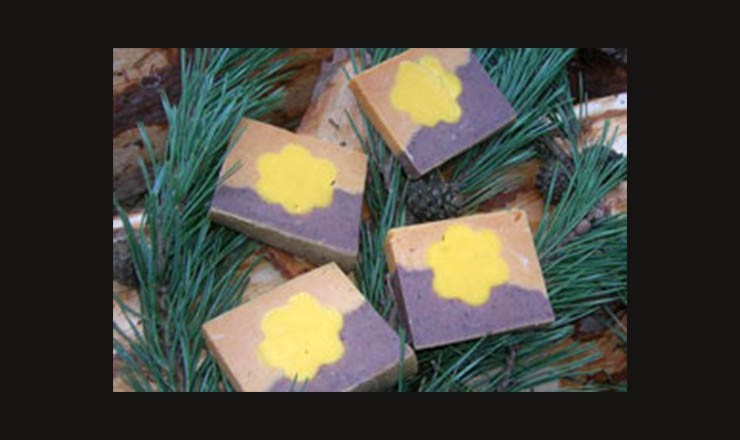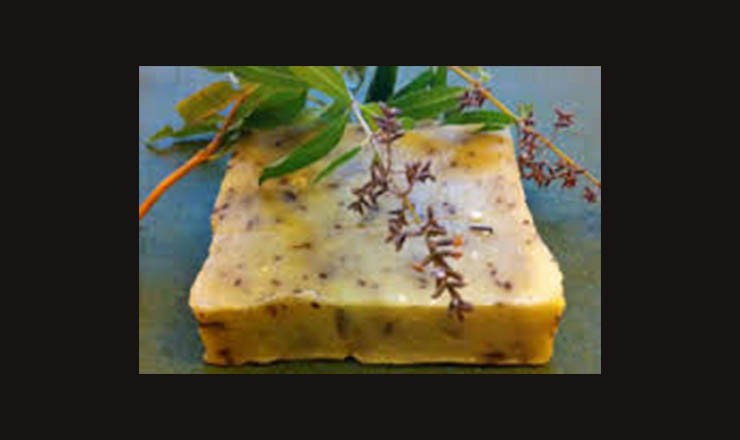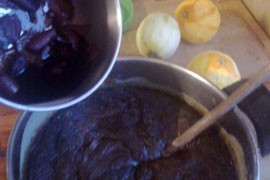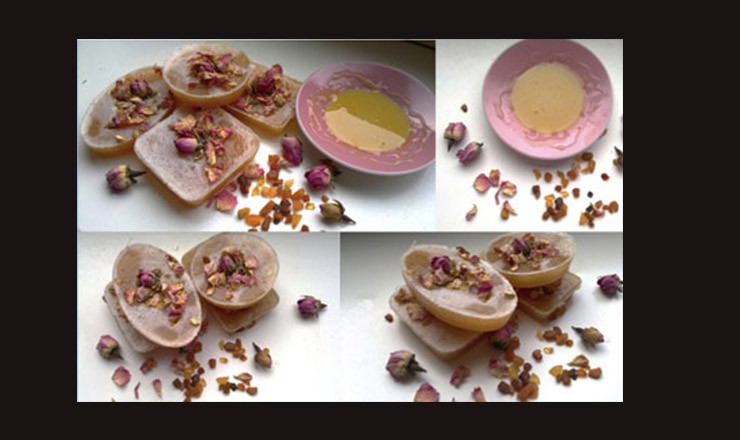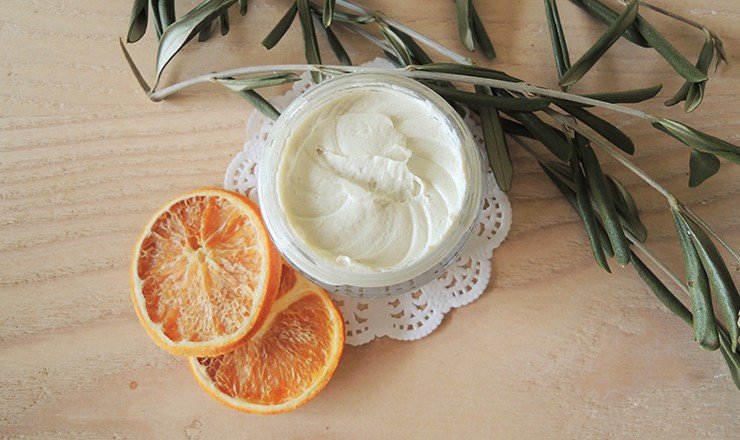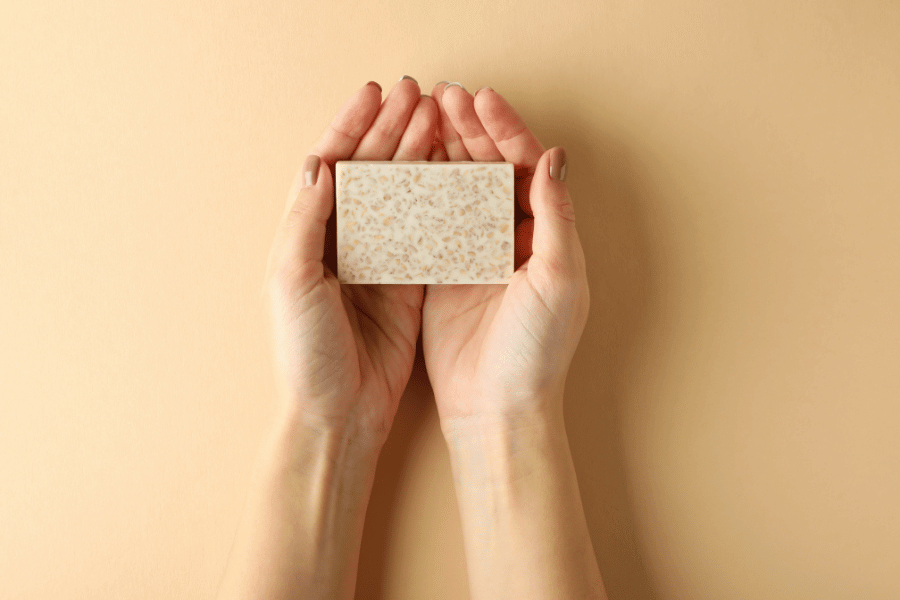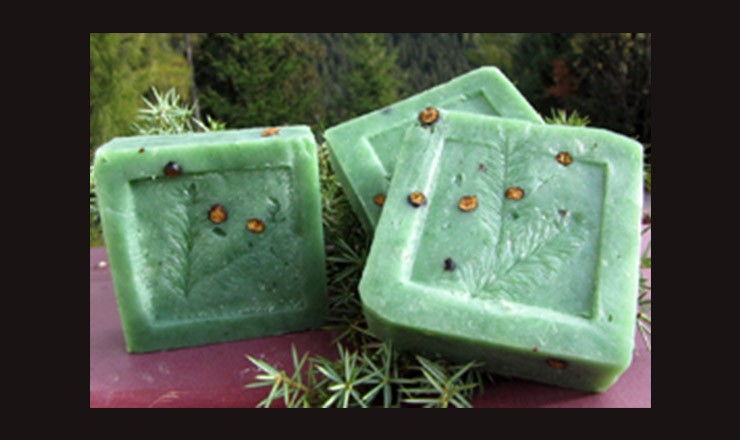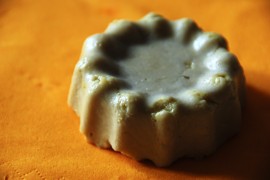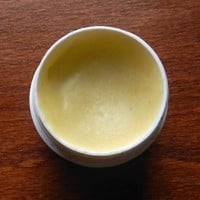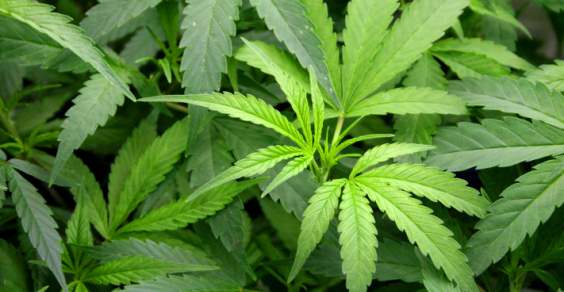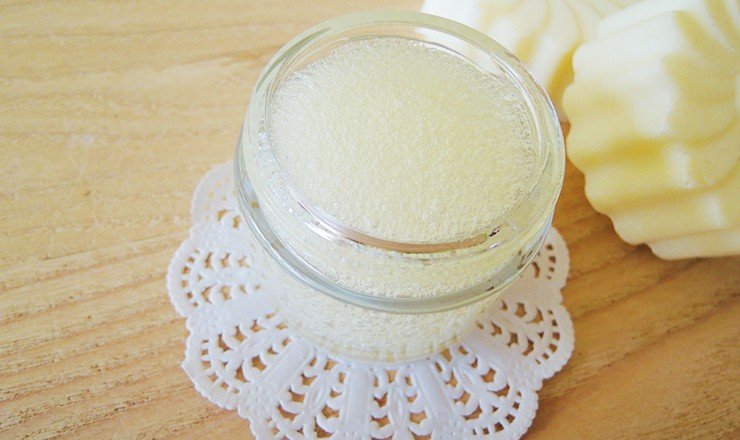Category: Hot method
When in the 60s I went with friends for a picnic "out of town" to the Roman Castles, we played in the meadows and chestnut woods, falling and rolling among the mint plants that grow there wherever there was a little sun and then we stopped in some trattoria where in the warmth of the fireplace we all ate together at a wooden table the pecorino romano and the porchetta from Ariccia with wild cicely. The mint and cicely soap is made with extra virgin olive oil from our region with the addition of Roman mint leaves and wild cicely flowers collected by me during the summer and dried. The soap mold recalls the shapes of pecorino romano and from this derives the name sapo-rino. Table salt causes the soap to dry very quickly. Even if the soap can be used immediately, it is best to let it dry for at least 15 days. Coconut oil is used to create foam. The yellow / green dotted color is given by the added dried plants.
Why does it represent the proverb "Saponi e buoi dei paesi tuoi"? Resia is a valley located in the easternmost corner of Friuli, nestled between Austria and Slovenia. It is home to a unique population in terms of language and culture, expressed through music, dances, traditions, and truly special folk festivals! In our language (Resian), "Val Resia" means Valley of Flowers. The valley is indeed an explosion of colors and scents from over 1200 plants (species and subspecies) found in the area, some of which are endemic.
To represent it, I chose a combination of colors and ingredients:
Brown to celebrate the land: rich and generous.
The central yellow flower to symbolize some of these flowers: St. John's wort, arnica, primroses, dandelion, goldenrod, calendula...
Honey, castor wax, lavender, and almonds: precious gifts from my beloved land.
This soap is inspired by the scent that invades our garden every summer, that of lemon beerbrush! At home we have always used lemon beerbrush in the kitchen, to make excellent herbal teas and a fantastic digestive liqueur .. And I thought: why not experiment with it in soap too? !! I then made this recipe with the hot method, using both the lemon beerbrush infusion and the leaves in the dough to create a light exfoliating effect. (this year, incredible but true, the lemon beerbrush is still in bloom in November !!)
ace represented by the soap: Trento and the tradition of Vin Brulé (Mulled Wine) consumed in the streets.
Why does it represent the proverb "Saponi e buoi dei paesi tuoi"? Vin Brulé is a sweetened wine cooked with orange and lemon zest, cinnamon, cloves, and a pinch of nutmeg. It's delicious, but above all, it's THE winter drink of Trento! In the city center, at every corner, there's a stall selling it in small cups that warm your hands. Its aroma fills Piazza Fiera, which during the winter is adorned with Christmas markets, and it's a must-have during the holiday season in the villages. If in the summer, after work, people meet in the square for a "Spritz," in the winter, they gather for a Brulè at the Christmas market! It may seem a bit too warm and too spicy to be an aperitif, but it's incredibly tasty and is said to work wonders against colds. So, if you have a sore throat or a stuffy nose, instead of recommending aspirin, they'll tell you to "have a Brulè!" which, with cinnamon and the essential oils of lemon and orange, is truly a remedy. And the beautiful thing is that you can drink it in the street. Despite the early darkness, the snow, and the fact that Trentini are known for their reserve, by the time the shops close, the streets are bustling! Okay, it's true that by nine o'clock, there's no one left... but hey, we're still in Trento, and you can't expect too much when it's minus ten degrees outside! In Trento, Brulè is made with red wine, and there are as many recipes as there are pots it's cooked in, but the base is always the same: citrus fruits and spices. A scent that immediately brings Christmas to mind and warms not only the stomach but also the heart.
Recipe submitted to the "Saponi e buoi dei paesi tuoi" self-production contest. Why does it represent the proverb "Saponi e buoi dei paesi tuoi"? This soap draws inspiration from the beauty of Baltic amber, the roses of Polish gardens, and the natural honey from Polish bees. I would describe this soap with three adjectives: elegant, romantic, and delicate. It embodies the perfect combination of ingredients capable of awakening three senses of our body: the touch of amber powder, the scent of roses, and the taste of honey. Amber, attributed with magical characteristics, reminds me of the elegant and mysterious beauty of the Baltic Sea. The precious amber powder is used as a luxurious exfoliant, making the skin softer and smoother. Rose essential oil is known for its moisturizing, firming, and skin-repairing properties. Its wonderful scent will give you a feeling of happiness, thanks to its antidepressant properties. Additionally, rose petals create a refined composition with amber powder. Honey has relaxing, emollient, and soothing properties. This fantastic liquid gold will help keep your skin hydrated and fresh.
Place represented by the soap
Brianza (Lombardy)
Beekeeping in Brianza is a little-known little pearl. Despite being at the gates of a large metropolis, there are many small businesses that are dedicated to the production of honey, pollen, royal jelly, propolis and the like, each with its very precious properties. Honey in particular has regenerating properties for damaged tissues, has energizing properties, strengthens the skin's defenses and protects against smog, atmospheric agents and sudden changes in temperature.
Even in the choice of the soap base, we tried to choose mainly fats available in local production or in any case of Italian production, avoiding the massive use of too exotic fats. At the same time, however, we wanted to obtain a complete soap with a consistent and soft foam and a warm and enveloping scent.
Recipe submitted to the "Saponi e buoi dei paesi tuoi" (Soaps and oxen from your own country) self-production contest. Why does it represent the proverb "Saponi e buoi dei paesi tuoi" (Soaps and oxen from your own country)? Because all the ingredients are typical of the Bergamo region, starting with polenta, a dish that accompanies us in both warm and cold weather, honey, a product that is abundant thanks to the differences that characterize my province... plains, hills, mountains. Extra virgin olive oil, also abundant in the areas of Sarnico, Scanzorosciate, etc... Alfalfa because it can be found in all the fields of the rural areas like those of Martinengo, where I grew up with my grandparents, among herbs like mint and basil... Potatoes are a very typical product of Martinengo... But it was a bit difficult for me to incorporate them into the soap...
Recipe submitted for the "Saponi e buoi dei paesi tuoi" self-production competition. Why does it represent the proverb "Saponi e buoi dei paesi tuoi"? Because it contains honey produced in the valley at 1500 meters, juniper berries, and red fir needles collected in the woods behind the house, as well as essential oils of wild pine, juniper, and red fir to evoke the scents of the forest. The soap's green color also recalls the colors of the woods. Additionally, each soap mold was made using a piece of fir wood and two fresh twigs.
Bits of soap that slowly dissolve on the edges of the sink. I try to take them but they slip out of my hands as soon as I try to use them with a little water. The fight is in vain. I collect them all together and transform them into something more conveniently usable.

